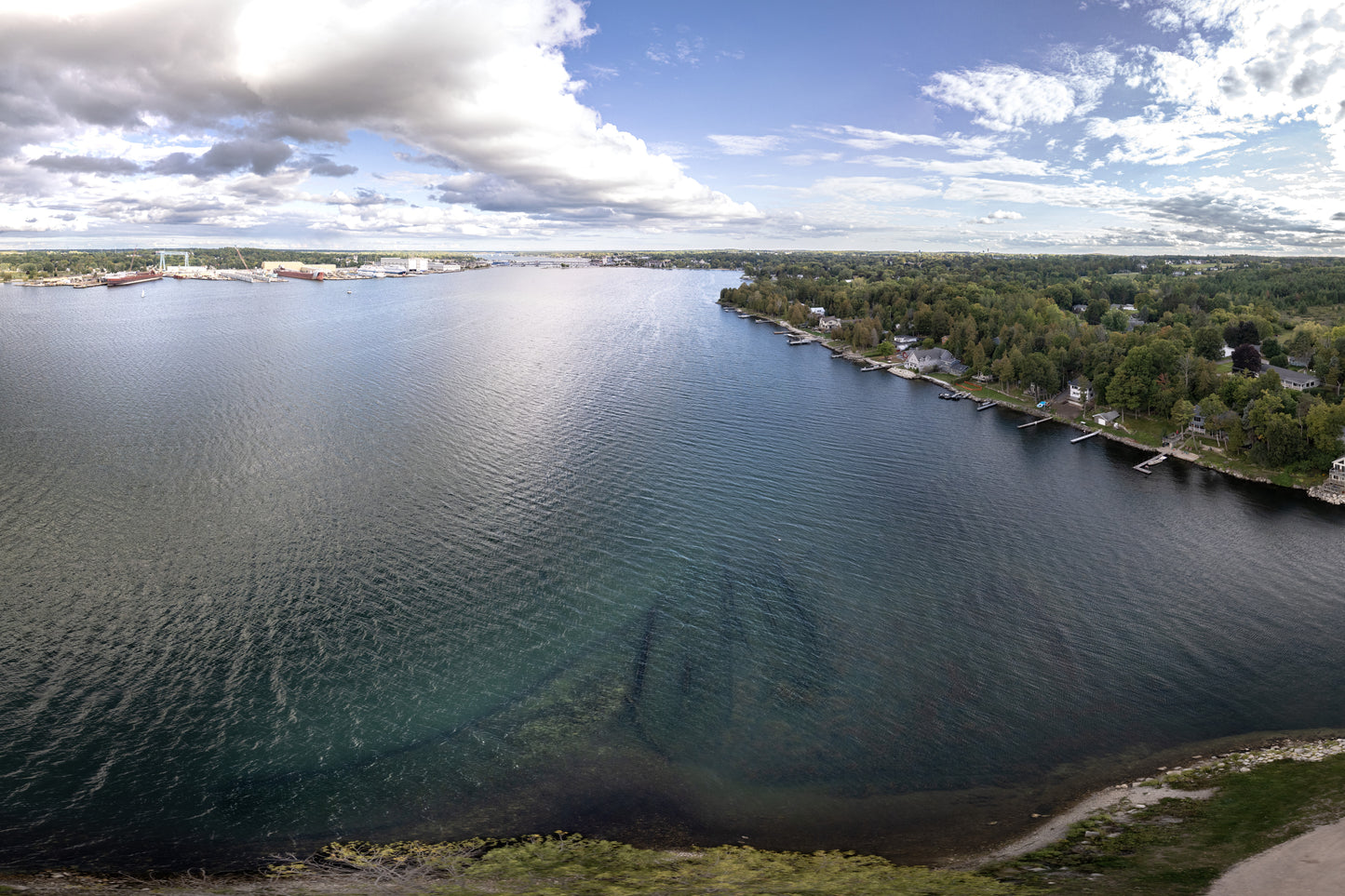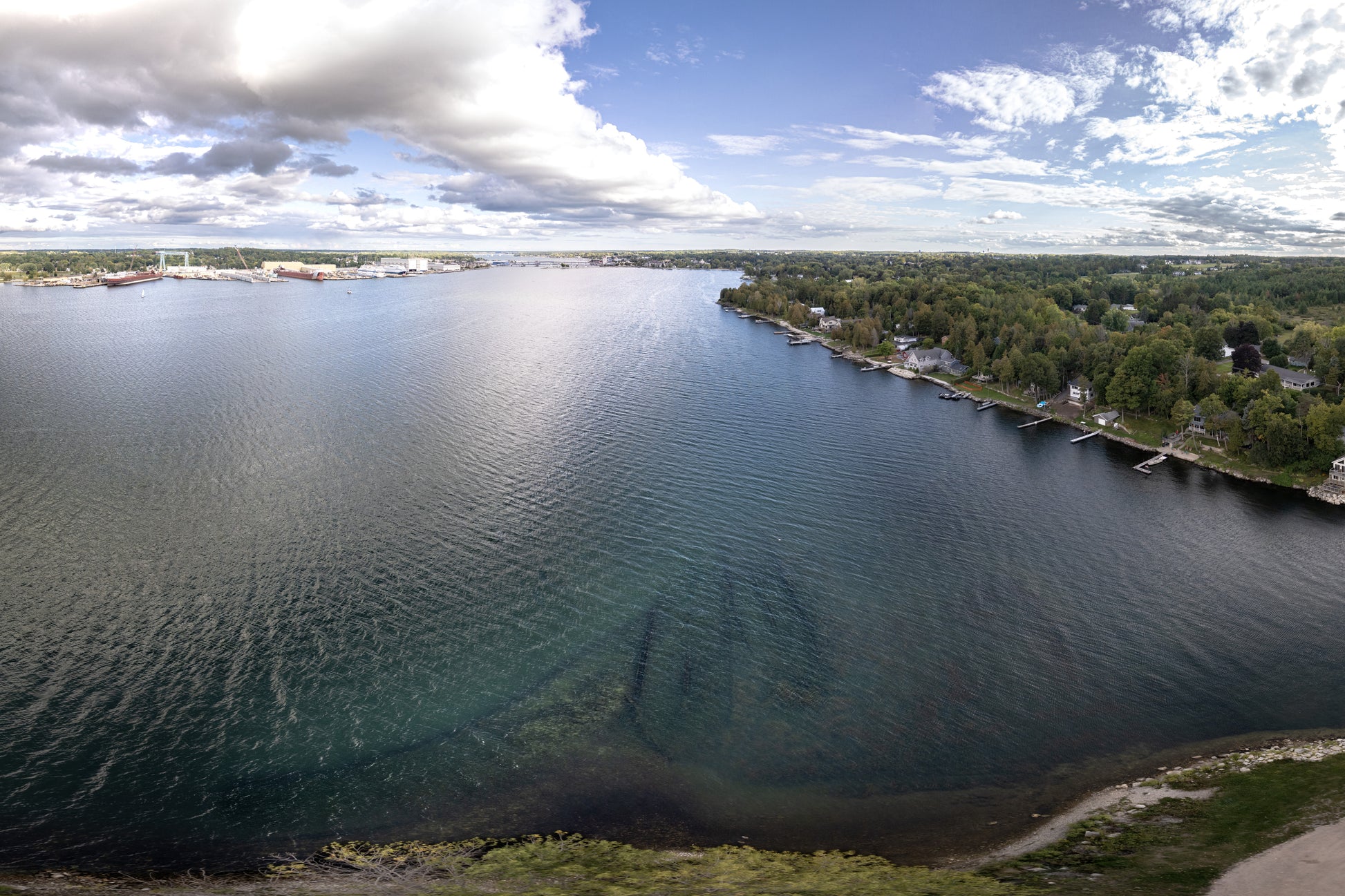Bullhead Point Shipwrecks
Bullhead Point Shipwrecks
Couldn't load pickup availability
Beneath the calm, rippling waters of Sturgeon Bay, the remains of three steamers rest in quiet testament to a bygone era of Great Lakes shipping. The sunken hulls at Bullhead Point are what remains of the Empire State, Oak Leaf, and Ida Corning—three vessels deliberately burned and scuttled in 1931 by what is now Bay Shipbuilding. Though time and the elements have softened their forms, these shipwrecks still whisper stories of a thriving maritime industry that shaped Sturgeon Bay into the shipbuilding powerhouse it is today.
The wrecks date back to a time when wooden steamers were being rapidly phased out in favor of steel-hulled ships. By the early 1900s, many older vessels were no longer economically viable, and shipbuilders found a simple solution—rather than scrapping them in yards, they were stripped of valuable materials, burned to recover their metal fastenings, and left to rest in shallow water. The remains of these three ships, once workhorses of the lakes, now serve as relics of that industrial shift, preserved in their watery graves.
Bay Shipbuilding, now one of the largest shipyards on the Great Lakes, has a direct connection to this era of transition. Originally part of the Sturgeon Bay Shipbuilding & Dry Dock Company, the shipyard played a crucial role in both constructing and dismantling vessels as the industry evolved. It was here, on the shores of Sturgeon Bay, that countless wooden ships were built, repaired, and eventually retired as newer steel giants took their place. The burning of the Empire State, Oak Leaf, and Ida Corning marked not just the end of their service, but also a turning point in Great Lakes shipping—a shift from wood to steel, from steam to diesel, and from small freighters to the massive bulk carriers that now dominate these waters.
While these shipwrecks were once little more than discarded remnants of an earlier time, they have since become an integral part of Door County’s maritime history. Today, the clear waters of Sturgeon Bay make them a unique and accessible window into the past, offering kayakers and divers a chance to glimpse the skeletal remains of ships that once traversed the Great Lakes. These wrecks, now resting just offshore, stand as enduring symbols of a time when Sturgeon Bay’s shipyards helped define the course of maritime commerce in the Midwest.
Through this photograph, we look down upon more than just sunken timbers—we see the echoes of an industry in transition, the remnants of ships that once carried cargo across the inland seas, and the legacy of a community built upon the rise and fall of the vessels that shaped it.
All prints are of museum quality and printed in The USA. Canvas Prints are wrapped around a hardwood frame to prevent long-term wrapping and utilize a 0.75" thick wrap. Metal Prints are glossy, vibrant, and of course are ready to hang. These prints make a statement and bring Door County home to your wall.
Share


